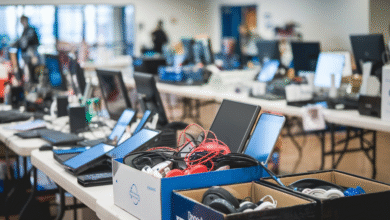Searchisback Alternatives: Easy Tools to Find People and Posts Fast

Searchisback alternatives are tools you can use when Search Is Back is not working or not giving you what you want. Many people use Search Is Back to find old Facebook posts, friends, photos, or events, but sometimes it is slow or has limits. That is when you can try other options. These alternatives can help you search in different ways, give more filters, and make it simple for anyone to find what they need.
Today, we will explore some of the best Searchisback alternatives that are easy to use. You do not need to be a tech expert. Even if you just know the basics of using a phone or computer, these tools can make searching fun and quick. We will talk about free tools, advanced ones, and even some that give you extra tips to find more accurate results.
What Are Searchisback Alternatives and Why You Might Need Them
Searchisback alternatives are other tools that help you search Facebook and sometimes other places in a simple way. Searchisback was popular because it made finding friends, photos, posts, or pages much easier. But now, many people look for new tools because Searchisback is not always working or has limits. These alternatives can give you better filters, faster results, and more control over your search. Some even let you search in ways Facebook’s own search does not allow. If you often need to find people, events, or posts quickly, these tools can save you a lot of time. They are also useful for small businesses, students, or anyone doing research. Knowing about different options means you are not stuck with one tool. This way, you can always keep your searches easy, quick, and effective without wasting time or missing important results.
How Searchisback Alternatives Can Make Your Search Faster
Searchisback alternatives often have better search filters and layouts that are easier to use. They can let you type less and still find more accurate results. Some tools allow you to search by specific details like location, job, school, or date. This means you do not need to scroll through endless posts or profiles that are not what you want. Many alternatives are also designed to load results faster than the normal Facebook search. A quick search is important when you are working on a project, checking someone’s background, or just curious about a topic. If you have slow internet, some alternatives still run faster because they are made to be light and simple. Using them can help you save minutes or even hours when you do many searches in a day. That extra time can be used for something more fun or useful.
Best Searchisback Alternatives for Simple Facebook Searches
Some Searchisback alternatives focus only on Facebook and do the job really well. These tools are made for people who just want to find friends, groups, events, or posts without extra steps. They often look cleaner and feel easier to use than Facebook’s own advanced search. With these, you can search by name, city, workplace, school, or even by liked pages. They are great for beginners who don’t want a lot of complicated features. Some even have one-click filters that instantly sort your results. You don’t need to be a tech expert to use them. If your goal is only Facebook search, then these focused tools are often faster, more direct, and less confusing. They help you find exactly what you want without too much typing or clicking. This makes your search quick, stress-free, and perfect for everyday needs.
Tools Like Searchisback That Work on More Than One Social Site
Some Searchisback alternatives go beyond Facebook and help you search on more than one social media site. This can be very helpful if you want to look for the same person or topic across platforms like Instagram, Twitter, or LinkedIn. Instead of opening each site and searching one by one, you can type it once and get results from different places. These multi-site search tools are great for people who need more complete information, such as journalists, business owners, or researchers. They can save a lot of time and give you a bigger picture. You might find details on one site that are missing on another. This is also good for checking if a person’s online profile matches across sites. Using one tool for many sites keeps things simple and helps you stay organized while finding what you need faster.
Free vs Paid Searchisback Alternatives: Which is Right for You
When looking for Searchisback alternatives, you will find both free and paid tools. Free tools are good if you only need basic searches and don’t mind a few limits. They can still do a good job for casual users. Paid tools usually offer more features, like deeper search filters, faster results, or searches on multiple platforms. They may also give better customer support and regular updates. Choosing between free and paid depends on how often and how deeply you search. If you just check things once in a while, a free option might be enough. But if you work in research, business, or marketing, a paid tool can be worth the cost. Paid tools also often have more reliable results. Thinking about your needs and budget will help you decide which option fits you best without wasting money or time.
How to Pick the Best Searchisback Alternative for Your Needs
Choosing the right Searchisback alternative starts with knowing what you need. If you only search on Facebook, a simple tool with clear filters may be all you need. If you want results from different sites, look for multi-platform search tools. Think about how fast you need results, how much detail you want, and how often you will use it. Also, check if the tool has an easy-to-use layout, because a simple design can save you time. Read user reviews to see if the tool is reliable and up to date. Trying a free version first can help you test before paying. Make sure the tool fits your daily habits so you don’t waste time learning something too complex. Picking carefully will make your searches smooth, quick, and stress-free, giving you the right balance between features and simplicity.
Pro Tips to Use Searchisback Alternatives Like a Search Expert
To use Searchisback alternatives like an expert, start by learning the search filters. The more details you give, the better your results will be. Try different keywords, such as names, cities, or dates, to narrow down what you are looking for. Keep your searches short and simple at first, then add more details if needed. Use exact phrases in quotes to find specific matches. Check if the tool has shortcuts or quick filters to save time. Update your search often if you are tracking new posts or events. Don’t be afraid to test different tools until you find the one that feels right. The more you practice, the faster and more accurate you will get. Experts are not always faster because they know more—they are faster because they know exactly how to use the tools well.
Common Mistakes People Make When Using Searchisback Alternatives
One common mistake is using too many or too few details in a search, which can give wrong results. Another mistake is not checking the date filters, so you end up with old or outdated information. Many people also forget to try different keywords or spellings, which can make them miss results. Some users rely only on one tool and never explore others, even if they might be faster or more accurate. Another problem is not reading the tool’s instructions, which can make it harder to get the best results. People sometimes use free tools for heavy searches, which can be slow or have limits. Avoid clicking on suspicious links or tools without checking reviews. Knowing these mistakes and avoiding them will make your searches more successful, safer, and faster without wasting time or missing important information.
Conclusion
Searchisback alternatives can make finding information faster, easier, and more fun. Whether you want to look for people, events, or posts, there is always a tool that can help. Some work only on Facebook, while others can search across many sites at once. By knowing your needs, you can pick the one that works best for you.
When you use the right tool and avoid common mistakes, searching becomes smooth and stress-free. You save time, find better results, and even enjoy the process. So try different options, learn their features, and you’ll soon search like a pro without feeling confused or lost.
FAQs
Q: What is a Searchisback alternative?
A: It is another tool that helps you search Facebook or other social sites more easily.
Q: Are Searchisback alternatives free?
A: Some are free, while others need payment for extra features.
Q: Can these tools search other social media?
A: Yes, some can search multiple sites like Instagram, Twitter, and LinkedIn.
Q: Is it safe to use Searchisback alternatives?
A: Yes, if you choose trusted tools with good reviews.
Q: Which is better, free or paid alternatives?
A: Paid ones often have more features, but free ones are fine for basic searches.



